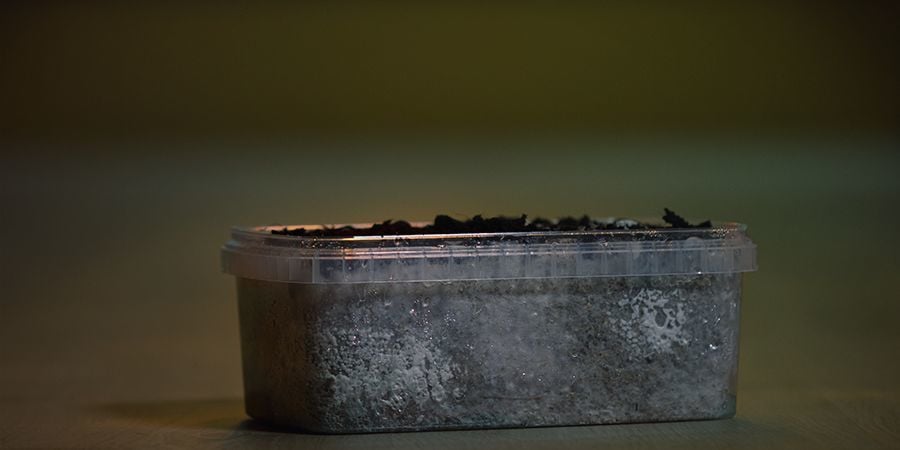
What Is Mycelium In Magic Mushroom Cultivation
If you've been looking into growing your own magic mushrooms, we're guessing you've seen the term "mycelium" come up in articles and forum discussions. Like a lot of concepts surrounding magic mushrooms, it can be confusing at first. Since it's so important to magic mushroom growth, we want to give you a clear idea of what exactly it is.
As easy as it is to enjoy magic mushrooms, learning how to grow them is a bit more difficult. The information out there is pretty limited, and every other bit of terminology sounds like a spell from Harry Potter. These terms, though, more often than not, refer to vital aspects of the shroom growing process.
Understanding this process and the different mechanisms involved is necessary for a good grow, so we’re here to make it clear. One of the terms you might have seen is "mycelium", and that's not without reason. Getting familiar with mycelium and the role it plays will go a long way in helping you successfully grow your own mushrooms and learn more about mycology.
WHAT IS MYCELIUM?
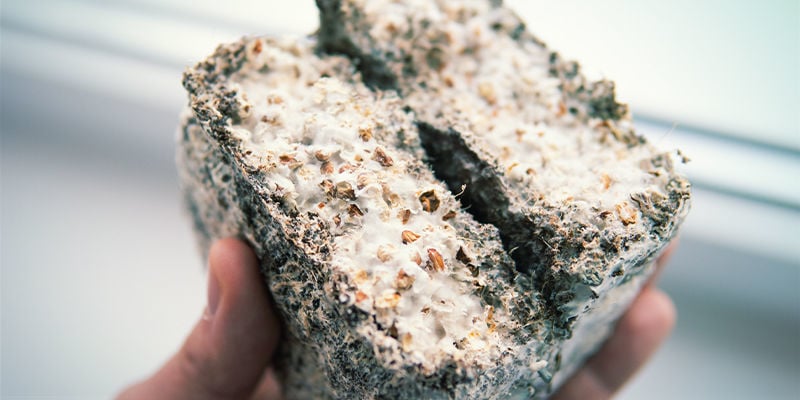
"If it's so important, you should probably explain what it is". Right, sorry about that. Well, mycelium is the vegetative part of the magic mushroom, the part of its anatomy that performs asexual reproduction of the fungus. It also facilitates microfiltration, absorbing nutrients and serving as an organic filter for soil and water in the environment.
If you want a basic way to understand the anatomy, consider the mycelium as the “roots” of the plant and the actual mushroom parts as the fruit (which they are).
THE FUNCTION OF MYCELIUM
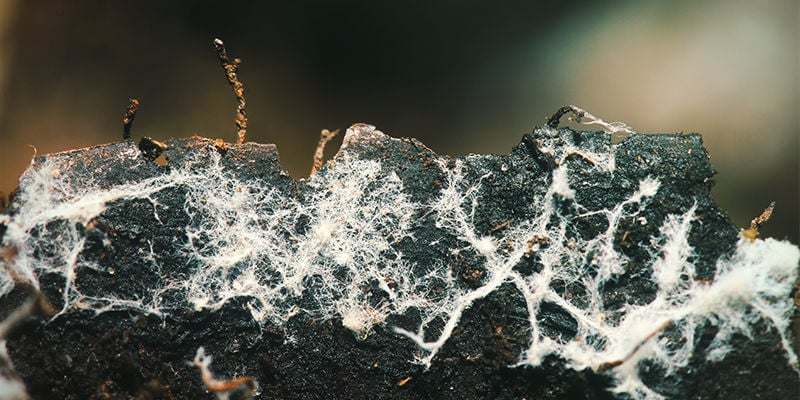
We referenced it above, but the function of mycelium is a two-step process. First, it looks for a food source, which will be some organic material in the ground. Once it's found a food source, it secretes an enzyme into it, breaking the food down into smaller parts as a result. From there, the mycelium is better able to consume it. Besides feeding the fungus, this process also serves to regenerate and filter the soil, ridding the ground of any pollutants.
This property lends itself to another major use outside of mushroom feeding: environmental repair and bioremediation. The biomass it breaks down turns into compost, which provides key nutrition to plants in the surrounding area. This can also be useful when composting on a larger scale. With the help of mycelium, biomasses become compost used for growing food, instead of just ending up in the landfill.
HOW MYCELIUM DEVELOPS
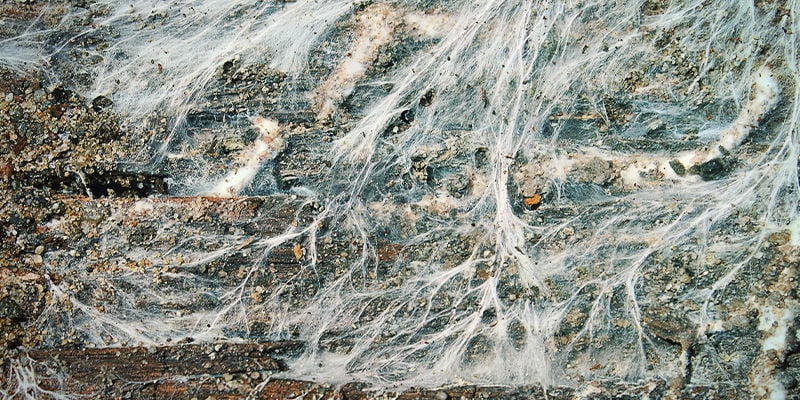
To understand the nature of mycelium, it helps to learn about its growth patterns and how the fungus develops. To help visualise, remember that magic mushrooms cluster in and on top of the soil and a variety of other substrates.
The hyphae, which are the tubes that grow into the fungal food source, digest other organisms to get energy. They search for food like dead trees and insect carcasses, growing out to form threadlike networks. The total network is called the mycelium.
The mycelium branches out from an original fungal spore. This growth pattern takes advantage of multiple food sources, but when the nutrients have finished decomposing in the centre, the middle of the circle gets converted. It ends up leaving the centre bare, while mushrooms grow in a ring pattern around the space. This pattern is sometimes called a “fairy ring”. According to legend, these rings serve as a passage to unearthly, magical realms.
DIFFERENT TYPES OF MYCELIUM
We've made it sound like there's only one type of mycelium, but that isn't the case. We'll be discussing three distinct types with their own appearances and ways of performing their natural duty.
STRING-LIKE MYCELIUM, AKA RHIZOMORPHIC
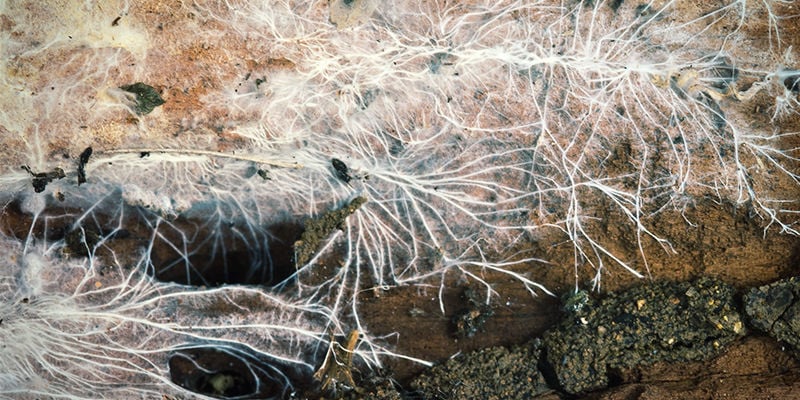
This is the sort of mycelium that most mushroom growers are looking for. Rhizomorphic mycelium is quite recognisable, typically appearing as a network of strings stretching across the substrate. It's able to spread itself far and wide, and checks the surrounding area for optimal conditions before telling the rest of the colony to spread.
Pro-rhizomorphic growers claim that this quick, even spread leads to an optimised and organised set of mushroom pins. They also note that this is the growth mushrooms will usually pop out through once they escape the substrate. In fact, if you're using agar for your substrate, rhizomorphic mycelium is historically preferred for that very reason.
COTTONY AND FLUFFY MYCELIUM, AKA TOMENTOSE
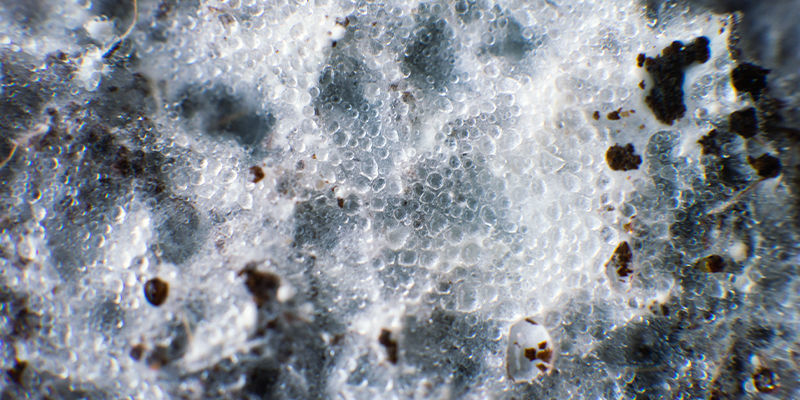
Overall, tomentose and rhizomorphic mycelium are more similar than different. That being said, there are key distinctions to be made. The first, and most notable, is the way the strands are arranged. With the cotton-ball-like appearance of tomentose, it might be hard to tell if there are any strands at all. This appearance, however, is only due to the fact that it doesn't need to stretch out to obtain the required nutrients. The strands are still there, but they're just more fine and bunched together.
There's some debate surrounding the significance of tomentose versus rhizomorphic mycelium. Some claim the former leads to a slower growing process, along with potentially making flushes less bountiful. Others, however, posit that there's no real difference overall, and that good flushes can come out of both. Whether one appears over the other is mainly dependent on the environment you're growing in. Furthermore, cultures can even switch between the two, providing good results in both cases.
AERIAL MYCELIUM
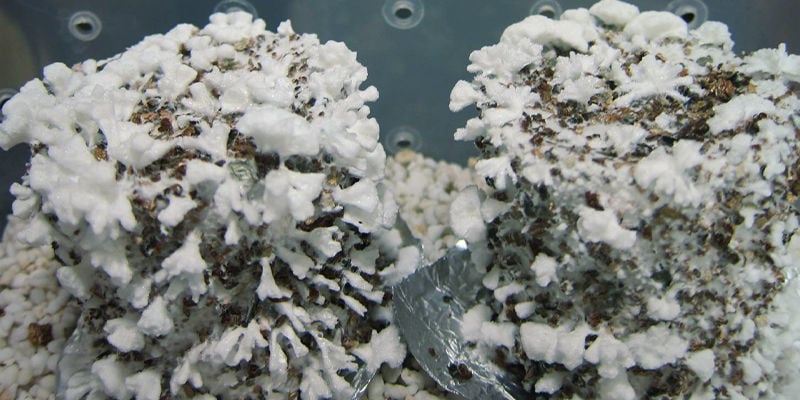
While the other two can both debatably be present in a healthy growing operation, aerial mycelium only appears when growing conditions are not optimal. You'll be able to tell this is happening when you see strands of mycelium shooting outward rather than stretching across or forming in a ball. This can often be confused for bacterial infection, but that's indicated by bunches rather than strands. Unfortunately, these can act as a major hindrance to your mushrooms, leaving them weaker and smaller by harvest time.
Aerial mycelium is usually caused by two things: a lack of fresh air exchange (FAE) and an excessively humid environment. If you tone down the misting and make sure you're getting enough air in to prevent CO₂ buildup, you're in the clear.
HOW TO TELL MYCELIUM APART FROM MOULD
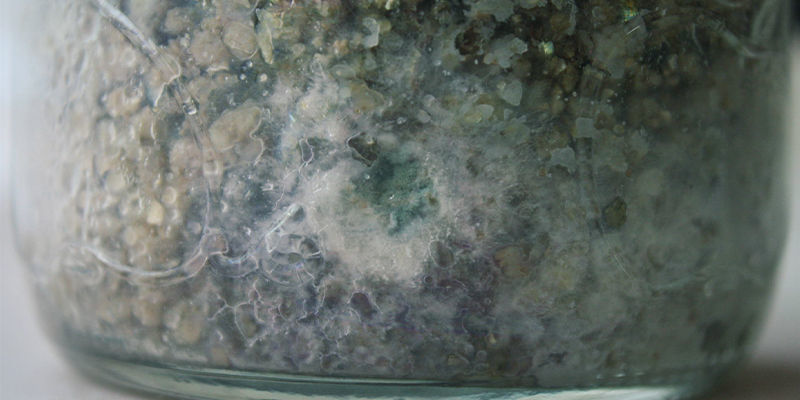
So, you can tell the difference between the three, but more distinctions need to be made. This time, however, it's between mycelium and mould.
The main thing you'll want to look for is discolouration. If you notice green, black, grey, or blue spots in your fruiting box, that's a clear sign of mould. Well, green, black, and grey are more clear signs, and blue spots can mean a few things.
Small blue stains, for instance, can sometimes be a sign of mycelium bruising. These bruises tend to appear when the mycelium is pressing against the grow box. If the stains are larger and mixed with other colours, though, that's an issue.
Other indicators are tougher to spot, requiring magnifying glasses and microscopes to find. If you've got a magnifying glass on hand, check your mycelium for a dusty texture on top. If you find it, it means you've got a contaminated operation. Sporophores, on the other hand, are small and hairlike with a "bubble" structure at the tips, and they blend in almost seamlessly with mycelium. They'll be basically invisible until you break out the microscope. They may be sneaky, but they're not impossible to beat.
PREPARED MYCELIUM MAGIC MUSHROOM GROW KITS
Ready to put this knowledge to the test, but still feel nervous about setting up your own growing operation? We've got an offer we'd like to share with you: Zamnesia mushroom grow kits! Fully colonised by high-quality mycelium and with a straightforward layout and specific instructions, these kits are the most painless route to an impressive yield of highly potent magic mushrooms.
-
 5 min
29 July 2024
How To Store Magic Mushrooms
If you want your shrooms to stand the test of time, then you'll need to not only dry them properly, but store them adequately too. While not difficult, it is important to get this right if you want...
5 min
29 July 2024
How To Store Magic Mushrooms
If you want your shrooms to stand the test of time, then you'll need to not only dry them properly, but store them adequately too. While not difficult, it is important to get this right if you want...
-
 5 min
26 April 2022
How To Harvest Magic Mushrooms
Now the time has come to harvest your magic mushrooms, you're almost there. Mastering this stage is fairly simple, but crucial if you want to reap the rewards of all your hard work. Find out how...
5 min
26 April 2022
How To Harvest Magic Mushrooms
Now the time has come to harvest your magic mushrooms, you're almost there. Mastering this stage is fairly simple, but crucial if you want to reap the rewards of all your hard work. Find out how...
-
![How To Grow Magic Mushrooms Indoors [3 Methods]](https://www.zamnesia.com/uk/modules/prestablog/themes/responsive/up-img/slide_2060.jpg?caf944d1febfc09552745fdff7015a5c) 5 min
22 February 2022
How To Grow Magic Mushrooms Indoors [3 Methods]
Growing magic mushrooms at home needn't be difficult. Here we look into three different growing methods, ranging from the beginner-friendly to the advanced. Whichever one you choose, big, healthy...
5 min
22 February 2022
How To Grow Magic Mushrooms Indoors [3 Methods]
Growing magic mushrooms at home needn't be difficult. Here we look into three different growing methods, ranging from the beginner-friendly to the advanced. Whichever one you choose, big, healthy...
-
 3 min
17 August 2020
5 Surprising Benefits of Magic Mushrooms
There are so many factors to consider when taking magic mushrooms, and it can be daunting overall. However, there are many benefits to taking this psilocybin-packed hallucinogen. Continue reading...
3 min
17 August 2020
5 Surprising Benefits of Magic Mushrooms
There are so many factors to consider when taking magic mushrooms, and it can be daunting overall. However, there are many benefits to taking this psilocybin-packed hallucinogen. Continue reading...
-
 6 min
30 June 2020
Everything You Need To Know About Magic Mushroom Substrates
If you’re cultivating magic mushrooms in bulk, or without a grow kit, you'll need to prepare a mushroom substrate. In this guide, you will learn everything you need to know about the right...
6 min
30 June 2020
Everything You Need To Know About Magic Mushroom Substrates
If you’re cultivating magic mushrooms in bulk, or without a grow kit, you'll need to prepare a mushroom substrate. In this guide, you will learn everything you need to know about the right...
-
 3 min
23 April 2020
How Much Light Do Magic Mushrooms Need To Grow?
Mycelium requires some degree of light in order to develop mature fruiting bodies. While some growers prefer to use LED or CFL lights on 12-hour schedules, others simply rely on the indirect...
3 min
23 April 2020
How Much Light Do Magic Mushrooms Need To Grow?
Mycelium requires some degree of light in order to develop mature fruiting bodies. While some growers prefer to use LED or CFL lights on 12-hour schedules, others simply rely on the indirect...














 United States
United States

